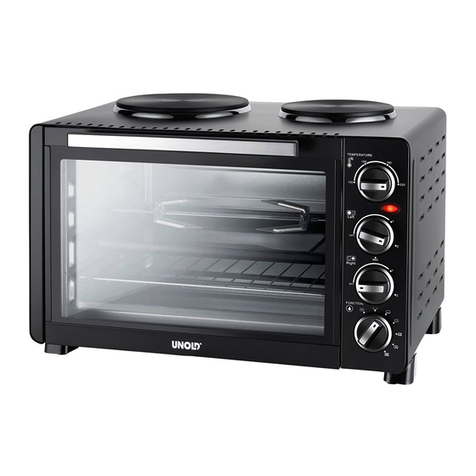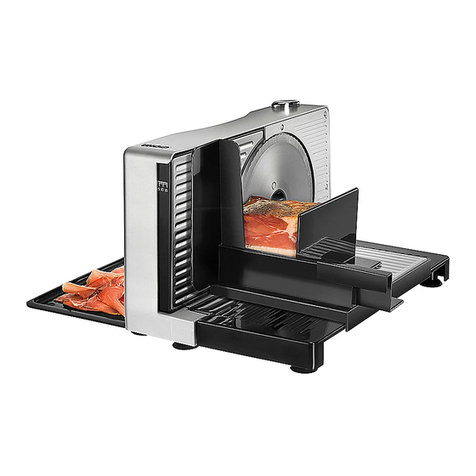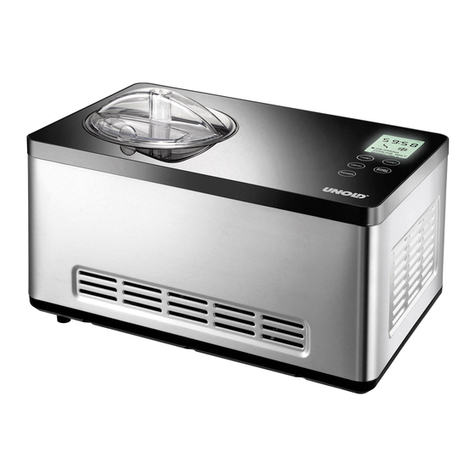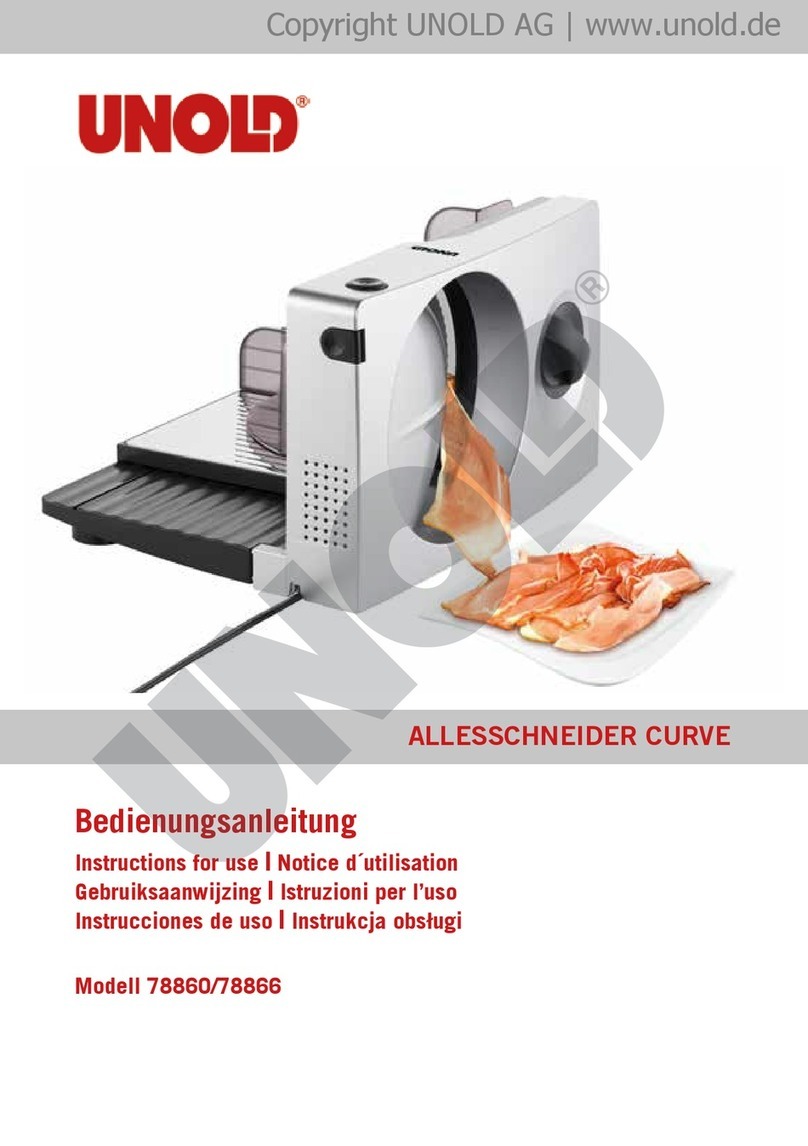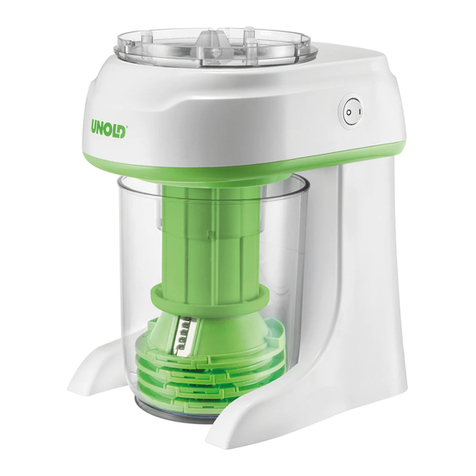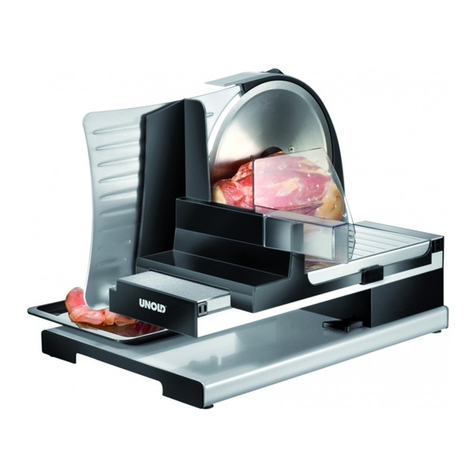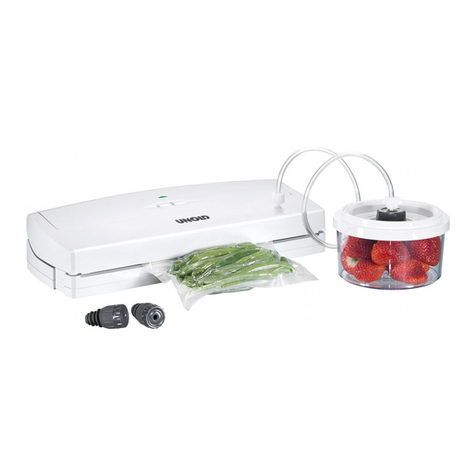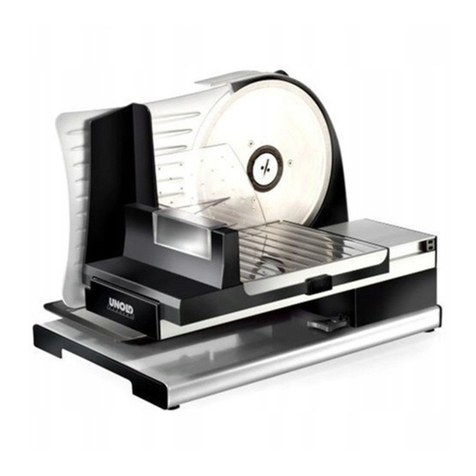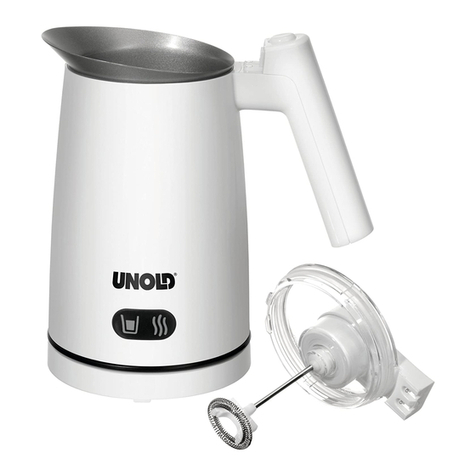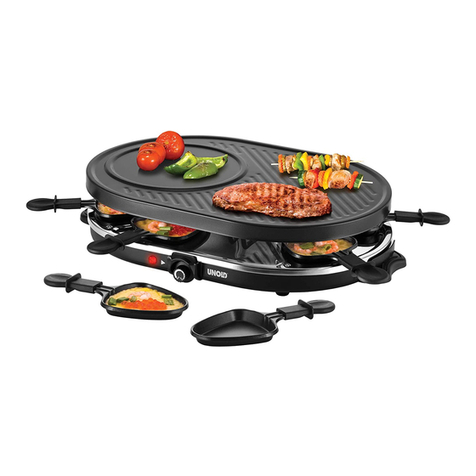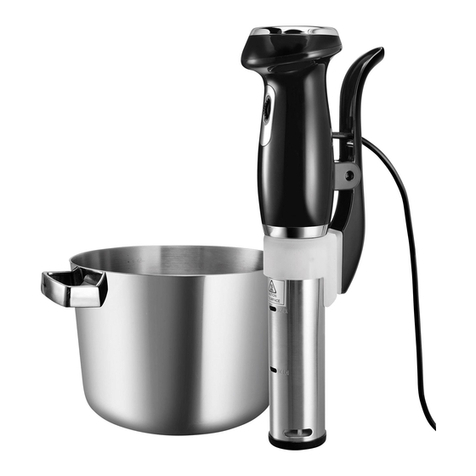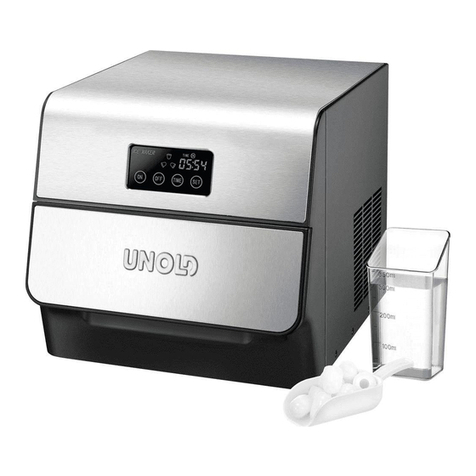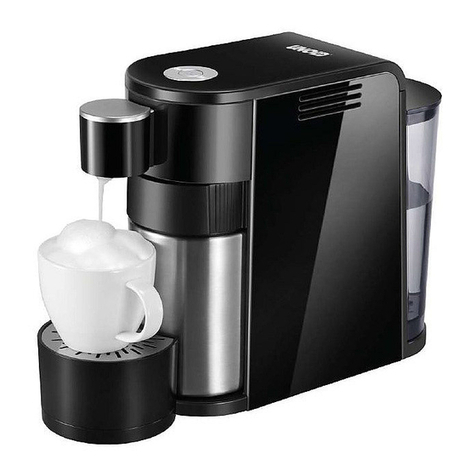
Please check, if all parts and accessories are complete and faultless. Before using the machine for the first time, re-
move all packing materials ans loose parts from the inside.
Wipe the bread pan of the
with warm water and a mild detergent and clean the kneading blades.
Wipe the exterior of the appliance with a damp cloth. Do not immerse the appliance into water. Dry all parts thor-
oughly. Place the bread pan into the machine. Put the plug into the receptacle and switch on the appliance. The
breadmaker is now ready for operation and can be programmed.
During the first oepration cycle, steam may be produced. We recommend to make firstly one operation cycle with
inserted idle bread pan (without kneading blades) in the program BAKING POWDER. Afterwards let the appliance
cool down. Now your breadmaker is ready for baking the first berad.
to switch the appliance on or off. This switch is located at the lower right side of the housing. If you don’t use the
appliance, you should always switch it off in order to interrupt the power supply and then take the plug out of the
The programs can only be selected and started when the appliance has been switched on.
for starting and terminating the program
With the Start/Stop-Button you can terminate the program in every program step. Keep the button
pressed until a bleep can be heard. The starting position of the initially chosen program is shown in
the display. Should you wish to choose
an alternative program, this can be done with the menu but-
ton. Then press the START/STOP button again.
plug is inserted in the socket, the
display shows the duration of the
last program used. After a longer
period of non.-use this is the programm
- (the figures blink). The arrow points to
. The breadmaker is ready for operation displayed.
During operation the program step can be read from the time-remaining clock as well as from the details on the dis-
play. The details are in English and mean:
sary (if not necessary, there is not operation in this stage);
The program (with the exception of BAKING-POWDER, RAPID; RAPID + DOUGH, RAPID + WHOLEMEAL, and JAM)
can be started with a timing delay. You must add the hours and minutes after which the preparation is to be started
is automatically applicable for the program and, if appropriate, the 1 hour
keep-warm time (following
and you wish to have freshly baked white bread at 7
The ingredients in the prescribed order are put into the pan, which is then put into the appliance. Care must be
taken that the yeast does not come into contact with liquid. Choose the required program with the
and enter the required browning with the
button and the required bread size with the
In this example we choose program 1 =
that requires 3:30 hours, plus a keep-warm
total time of 4:30 hours), which means that the
program must begin at 2:30 a.m. in
The time (in the example, it is 8:00 p.m.) that lies between the programming and your breakfast is 11 hrs. In order
to get fresh warm bread at 7:00 in the morning, you must increase the program duration by means of the timing
to 11 hrs (in steps pf 10 min.). When the display shows the program duration of 11 hrs you can
start the operation by pressing the START/STOP button.
